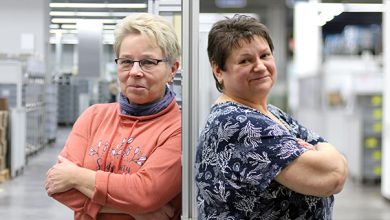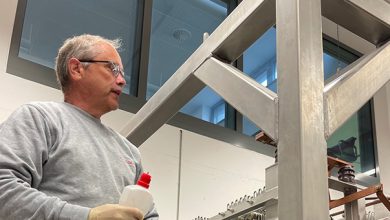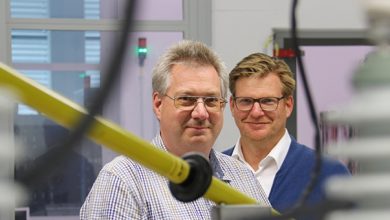Murders do not happen in his garden, but things do start to become somewhat “turbulent” behind the Schieder Training Center when Gerhard Wolff lets the sparks fly or throws his iron shot into the Blood creek.
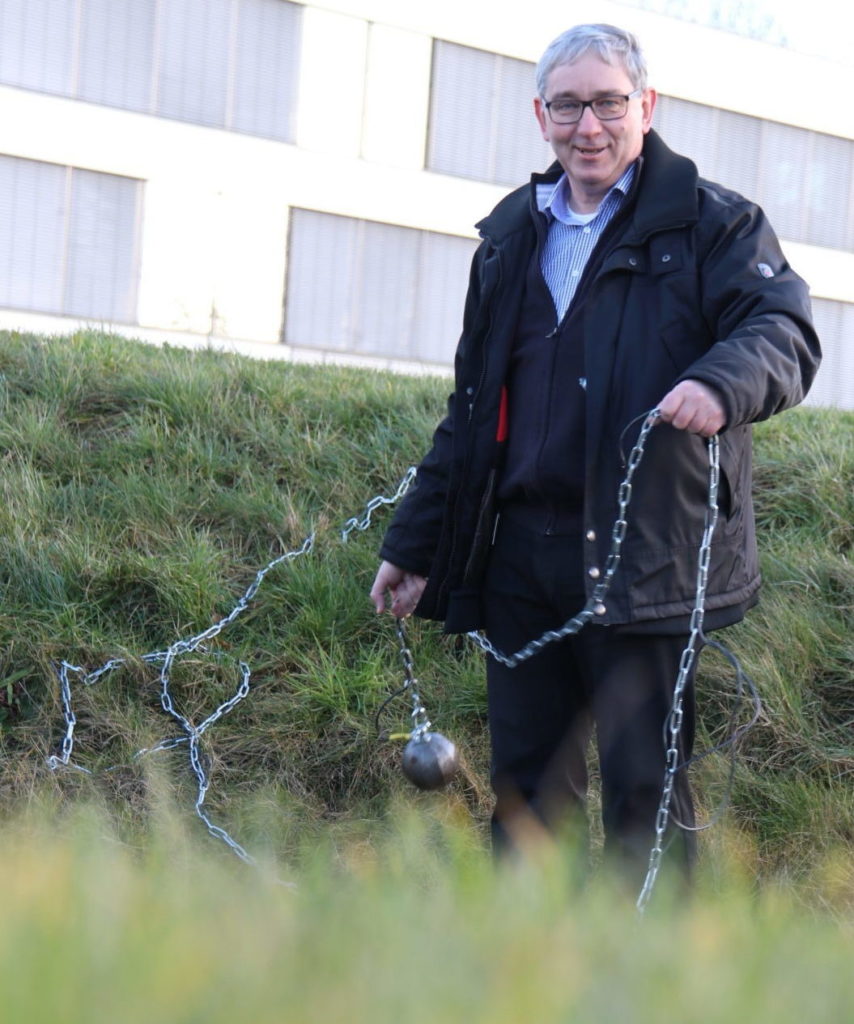
No need to worry! There is nothing sinister about Gerhard Wolff appearing in his grounding garden carrying chains and maces. And the electricity generated is safely dissipated via various grounding electrodes… or is reflected in the eyes of the protégé. In these cases, however, the resourceful and eloquent engineer ensures that it is not dissipated, but intensified instead.
Wolff, 61, has plenty of protégés. This is because his grounding garden, as his test facility is called, is unrivaled worldwide. And no wonder – there are more than 30 different grounding electrodes installed behind the newly built Phoenix Contact Training Center in Schieder, from grounding rods of various lengths, to ring and plate grounding electrodes, through to surface grounding electrodes. An additional group of arresters, the mobile shot grounding electrodes, has also been made accessible.
The background to all of this is that Gerhard Wolff is a man of action. The trained electrician, who studied automation technology in Lemgo after completing his technical diploma, knows exactly what the challenges facing lightning-protection and electrically skilled persons are when it comes to testing grounding systems.
Drilling holes as a part of training
Grounding electrodes are electrically conductive parts which are used to establish electrical connections reliably and permanently to the surrounding ground over their entire useful life. Even natural grounding electrodes, such as metal parts which were not originally intended for grounding, can act as grounding electrodes. Examples of these include sheet pilings, piping, and metal construction elements in buildings.
Their task is to ensure electrical safety through protective grounding or functional grounding. Of course, this also includes the lightning protection systems of the building.
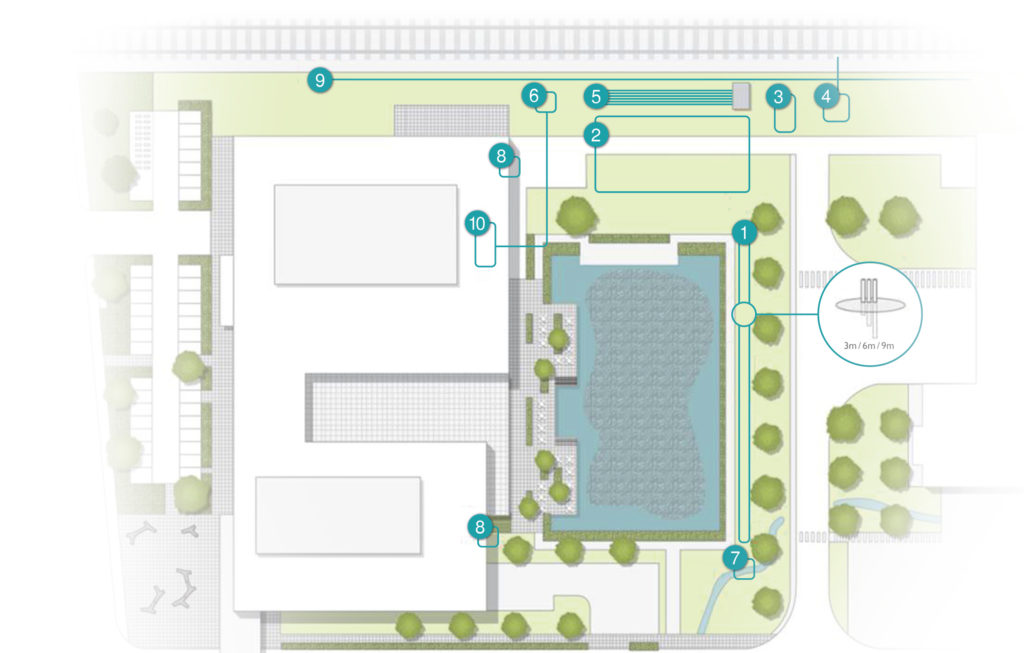
1. 27 grounding rods
2. Ring ground electrode
3. Plate ground electrode
4. Permanent connection to a railroad rail
5. Six radial surface ground electrodes
6. Distributor box
7. Shot grounding electrodes in the Blutbach creek
8. Connection to protective device
9. Control and signaling cable parallel to the track
10. Building G100 equipotential bonding strip
Grounding systems are to be constructed using special materials in specific grounding arrangements. Surface grounding electrodes or grounding rods are mainly used today. If the inspectors of these systems do not have a set routine – e.g. regularly performing grounding measurements themselves – or are not sufficiently familiar with the measuring devices, uncertainties or incorrect measurements may arise.
And this is not uncommon. Wolf is well aware that even today, the basics of grounding system construction and the mastering of grounding measurements are only touched upon in vocational electrical engineering training courses. Metrological basics are very rarely taught. Even experienced practitioners would sometimes find it difficult to take correct grounding measurements.
Against this backdrop, the grounding garden becomes more significant. Wolff and his colleague from industrial engineering, Matthias Unruhe, were the initiators of this unusual project when the site was being redeveloped. After all, among other things, 27 grounding rods had to be driven into the ground to a depth of up to nine meters, just 35 centimeters apart and without touching.
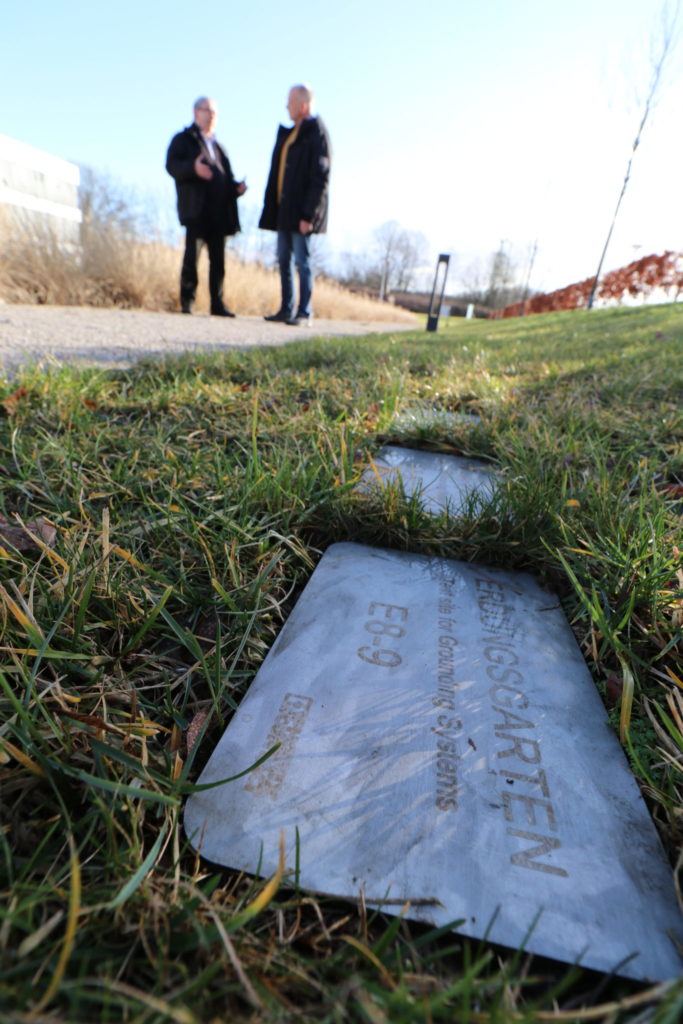
Wolff didn’t shy away from the nearby railroad embankment, either. This shouldn’t come as a surprise, because the longest serving member of the Trabtech surge protection team (“I am Trabtech”) is, among other things, a member of the German Academy for Rail Systems (VDEI) and trains railroad engineers in lightning and surge protection.
The rail potential of one track of the electrified two-track Hanover-Paderborn rail line, which passes alongside the property, is routed onto the company premises, and is used for various railroad grounding measurement activities. Original railroad signal cables are routed parallel to the track in shielded and unshielded versions, and made accessible for taking control measurements at the respective ends in insulating material distributors on the property of the test facility.
No Industrie 4.0 without grounding
Gerhard Wolff has been working at Phoenix Contact since 1983, and has been the Master Specialist responsible for grounding, shielding, and measurement since 2000. Dealing with this subject has left its mark on the engineer. “I sometimes find it difficult to get on with the high-flyers. I always say that without a sound electrical infrastructure and practical experience, Industrie 4.0 is not possible. Without grounding, there is likely to be a crash landing.”
His mischievous smile reveals that Wolff’s pun did not pass him by. If the mission-driven grounding gardener were to list his roles in the various organizations (“maybe 10 or 12”) he is involved in, even just writing it down would be difficult. For example, Wolff is a founding member of the coordination committee for the EMC-certification body at VdS Schadensverhütung, a leading independent testing institution.
Not without pride, Gerhard Wolff is also a lecturer at the Hannover-Ricklingen University of Applied Sciences and the VDEI Academy, among other institutes (“from electrician to university lecturer”). The sought-after specialist in grounding and lightning measurement spends around 100 days per year away from his office desk, giving training courses, lecturing, or trouble-shooting.
The man with the ax
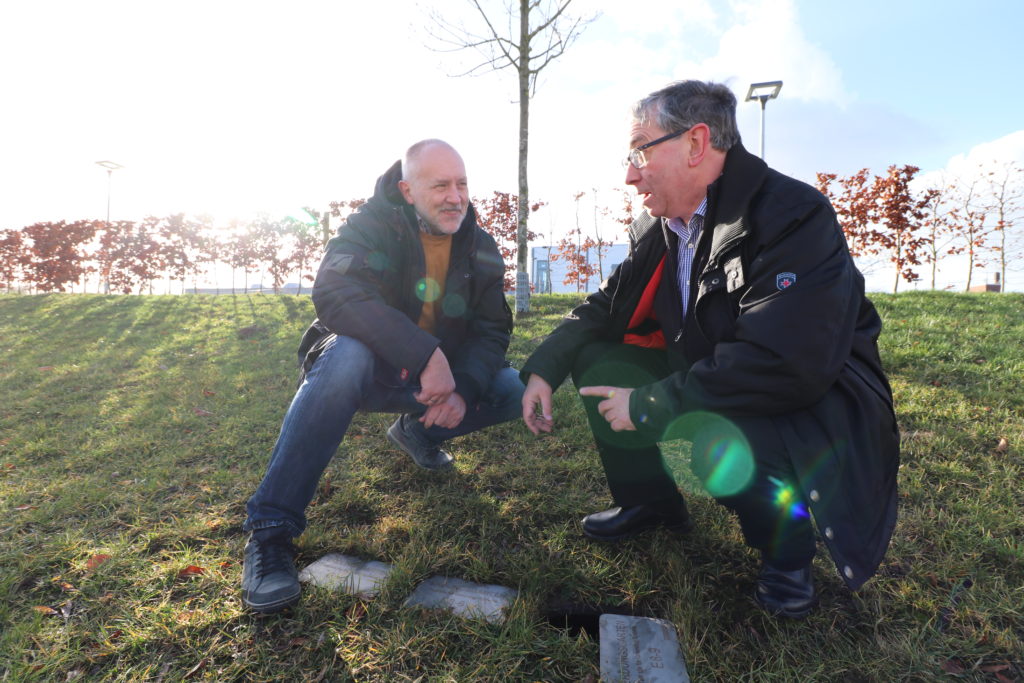
Wherever he is, Wolff always has his doctor’s bag with him (“made of three-millimeter thick buffalo leather”). This doesn’t just contain measuring devices that he uses out in the field, but also exotic items such as a stethoscope, a surgeon’s hammer, and a trusty ax (“from the DIY store”). He has even registered a patent for this, namely as the “patented PEN-disconnector”. In expert circles, Wolff is therefore known as “the man with the ax”. Talking of patents, Wolff has filed a number of invention applications at the Patent Office through the in-house patent department, and around a third of these have been granted patents.
Anybody who thinks that the grounding gardener is overloaded with teaching assignments, inventions, and seminars is wrong. When it comes to his grounding garden, the sparks are not just flying off the ground electrodes: “We’re only just at the beginning. The grounding garden is a real answer to many of the practical problems out there. We are increasing the availability of entire industries with our expertise, and so we really have to put what we discover in the grounding garden into practice.””
